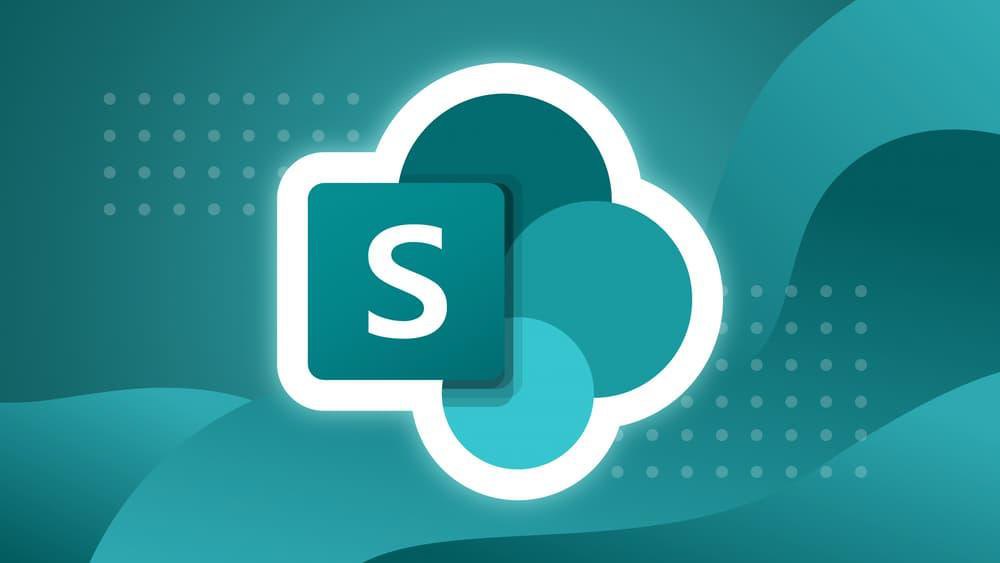In the realm of organizational collaboration and document management, SharePoint stands as a technological cornerstone for businesses worldwide. Renowned for its robust capabilities and advanced features, Microsoft’s software has become instrumental in streamlining workflows and knowledge management. It has been the go-to solution for countless organizations of all industries for quite some time now.
Nevertheless, as technology progresses, so do the demands and expectations of businesses, so they must adapt to stay relevant and competitive. Thus, the need for a SharePoint migration often becomes not just a consideration but a strategic necessity. Whether transitioning from an older SharePoint iteration or contemplating a shift from an entirely different platform, the imperative of a meticulously planned migration remains unwavering.

Photo by Arthur Hidden from Freepik
The process of migrating to a new SharePoint environment, be it on-premises or SharePoint online migration, always demands a strategic approach. After all, it’s a process encompassing a comprehensive assessment of existing file systems, a precise delineation of objectives, and a thoughtful selection of the optimal SharePoint version and deployment model, which necessitates expert knowledge and, usually, professional SharePoint migration services.
Because a well-executed SharePoint migration project yields a host of advantages. Among other things, it ensures your organization can harness the latest, most advanced features and benefit from enhanced security measures. This lays the foundation for improved collaboration, optimized performance, and seamless integration with vital tools and services. Additionally, it aligns your legacy systems with regulatory and compliance standards, establishing a secure and reliable backbone for your business operations.
A SharePoint migration transcends mere technical upgrades; it represents a strategic maneuver aligning your organization with the ever-evolving technological landscape. By recognizing the imperative for change and embarking on a well-planned migration adventure, you position your organization to adapt and thrive in an environment of perpetual digital advancement.
This blog post is all about that. Without further ado, let’s look at how to plan and execute a successful SharePoint migration process with the best practices and a quick checklist in mind.
Why Migrate in the First Place?
First, for each company, it’s crucial to grasp the underlying motivations before embarking on a SharePoint migration journey. Organizations consider this transition for a multitude of compelling reasons, each contributing to the overall enhancement of their operations:
- Outdated infrastructure: Ageing SharePoint versions may lack critical capabilities and modern security features that have become imperative for businesses in today’s dynamic landscape.
- Improved collaboration: Contemporary iterations of SharePoint introduce a suite of advanced collaboration and reporting tools, empowering teams to work seamlessly and efficiently, regardless of geographical dispersion.
- Compliance and security: Staying updated with the latest SharePoint versions ensures access to robust security solutions and compliance with the given native tool. This is particularly crucial in an era where data security and regulatory adherence are paramount concerns and identity-centric cybersecurity is a must.
- Integration with other tools: Older SharePoint versions might be limited in their integration capabilities with other pivotal software and services, hindering an organization’s overall workflow and productivity.
- Performance optimization: Modern SharePoint versions are engineered for superior performance and scalability. This translates to faster load times, smoother operations, and the ability to handle larger datasets, ultimately resulting in heightened productivity.
Moreover, numerous organizations have long relied on on-premises SharePoint deployments but are now eager to harness the cloud capabilities offered by Microsoft Office 365. However, the challenge lies in effecting a seamless transition from the established on-premises setup to the cloud-based environment.

Photo from Freepik
Thankfully, the realm of SharePoint migration has witnessed the emergence of a diverse array of technologies, with each Microsoft SharePoint migration tool geared towards simplifying and streamlining this intricate process. These technologies offer unique advantages and considerations, making them well-suited for different organizational contexts and objectives.
Nonetheless, if you’re not prepared to deploy the SharePoint online migration task with your in-house employees’ help, remember that here at eSoftware Associates, we provide professional SharePoint migration services and do the heavy lifting for many clients worldwide!
Since we’re a certified Microsoft partner, we can provide top-notch insights into how you can make the most out of the SharePoint platform and show your team leaders and employees how they can integrate these products and utilize them more efficiently than you have ever imagined. So, if you need help with any point of your SharePoint migration, fill out our form and contact our SharePoint migration experts immediately to book a consultation and learn more about our dedicated SharePoint migration solution services.
On the other hand, if you’re ready to start the migration on your own, please continue reading as we’ll go through the best practices and the ultimate checklist for planning a successful SharePoint migration.
Best Practices for Planning a SharePoint Migration
Perform a Thorough Pre-Migration Assessment
Before the SharePoint migration sessions begin, a comprehensive assessment of the existing environment is paramount. This involves several crucial, basic steps:
- Content inventory: Begin by cataloging all existing content within your SharePoint ecosystem. This encompasses documents, lists, workflow migration, and any customizations integrated into the system over time. This inventory serves as a crucial reference point throughout the migration process.
- User analysis: Understanding the user landscape is pivotal. Identify the primary users and discover their specific needs and utilization patterns within SharePoint. This insight provides a foundation for tailoring the migration to serve the user base best.
- Infrastructure review: Assess the underlying infrastructure supporting your current SharePoint deployment. This includes a detailed evaluation of the hardware, software configurations, and any third-party tools or integrations in use. This examination ensures compatibility with the target environment and highlights potential areas for improvement.

Photo from Freepik
Define Clear Objectives and Scope
Setting precise objectives is instrumental in steering the migration towards success. Clearly articulate what accomplishments signify success for your organization. This could involve aims such as achieving heightened performance levels, fostering enhanced collaboration, or fortifying security measures.
Choose the Right SharePoint Version and Deployment Option
Selecting the appropriate SharePoint version and deployment model is a critical decision. The choice often boils down to migrating to SharePoint Online, a cloud-based solution, or SharePoint Server, an on-premises option. Consider factors such as cost considerations, security requirements, compliance obligations, and the specific operational needs of your organization.
Backup and Data Migration Strategy
A robust backup strategy is paramount to prevent data loss during the migration. Leverage SharePoint’s native backup and restore features and explore the potential of employing third-party tools for an added layer of security. This ensures that data remains safeguarded throughout the transition process.
Evaluate and Update Customizations
A meticulous evaluation of these customizations is imperative for organizations that have customized their SharePoint environment. Assess their compatibility with the target version to preempt any potential hiccups. This encompasses scrutinizing custom migration of workflows, web parts, and templates and ensuring they seamlessly integrate into the new production environment.
Test, Test, Test
Before executing the migration in the live environment, rigorous testing in a staging environment is non-negotiable. This practice allows for identifying and resolving potential issues before they can impact end-users. Thorough testing provides the confidence that the migration will proceed smoothly.
Plan for Downtime and Communication
Anticipate and prepare for potential downtime, mainly if dealing with extensive datasets. Communicate the migration plan clearly and proactively to all stakeholders. Offer them a detailed understanding of what to expect during the migration process. This transparency minimizes disruptions and ensures that all involved parties are well-informed.
In adhering to these meticulous steps and best practices, organizations are poised for a successful migration. This structured approach minimizes potential hiccups and maximizes the benefits reaped from the transition, positioning the organization for heightened efficiency and productivity in its SharePoint environment.
Additional SharePoint Migration Checklist
While the best practices mentioned earlier provide a comprehensive guide, this checklist delves into specific areas that may not have been covered extensively:
- Stakeholder Alignment and Communication
- Ensure all key stakeholders are informed about the migration planning procedure, including executives, department heads, and end-users.
- Establish clear communication channels for updates, questions, and feedback throughout the business migration process.
- Data Clean-Up and De-duplication
- Conduct a thorough review of existing data to identify and eliminate redundant or obsolete content migration issues.
- Merge or archive duplicate files and folders to streamline migration and improve data integrity.
- User Training and Support
- Provide training sessions or additional migration resources to familiarize users with the new SharePoint source environment.
- Set up a support system or helpdesk to address user concerns or questions during and after the migration package.
- Governance and Security Review
- Evaluate and update the new SharePoint environment’s security settings, user permissions, and access controls.
- Review and refine governance policies to ensure compliance with industry regulations and organizational standards.
- Performance Optimization
- Conduct performance testing in the staging environment to identify potential bottlenecks or areas for improvement.
- Fine-tune configurations, such as indexing, caching, and content delivery networks, to enhance system performance.
- Business Continuity and Disaster Recovery
- Develop a robust business continuity plan to mitigate risks and ensure uninterrupted access to critical data and applications.
- Implement regular backup and recovery procedures to safeguard against unforeseen events or data loss.
- Post-Migration Evaluation and Feedback Loop
- After the incremental migration, gather user feedback to identify any issues or areas for improvement.
- Use this feedback to refine the new SharePoint environment’s processes, customizations, and configurations.
- Documentation and Knowledge Transfer
- Document configurations, document permissions, document library, customizations, and unique settings in the new SharePoint environment.
- Ensure knowledge transfer to IT teams and administrators responsible for managing the post-migration environment.
By incorporating these additional checklist items alongside the best practices mentioned earlier, you’ll create a comprehensive plan for your SharePoint migration. This dual-focus approach covers a wide range of considerations, ensuring a successful, smooth transition to the new environment.
In Conclusion: Navigating Your Path to a Seamless SharePoint Migration
Embarking on a SharePoint migration is a significant undertaking that demands careful planning, strategic thinking, and a thorough understanding of your organization’s unique needs. By following the best practices and checklist outlined in this guide, you can confidently and precisely navigate this journey.
Remember, a successful SharePoint migration isn’t solely about moving data from one place to another. It’s about elevating your organization’s capabilities, optimizing collaboration, and fortifying security measures. It’s a strategic move that aligns your business with the ever-evolving landscape of technology.

Photo from Medium
In the aftermath of migration, the journey doesn’t end. Gathering feedback, evaluating performance, and refining your SharePoint environment to meet evolving business needs is essential. Documenting configurations and implementing a robust business continuity plan ensures that your organization is prepared for the future.
So, with this guide as your compass, embark on your SharePoint migration journey with confidence. Navigate the complexities, seize the opportunities, and witness firsthand how a dedicated, selective migration can transform your organization’s digital landscape. The path to SharePoint excellence awaits – step forward and embrace it.
Enjoy this article? Share us on social media below or on your favorite sites.
